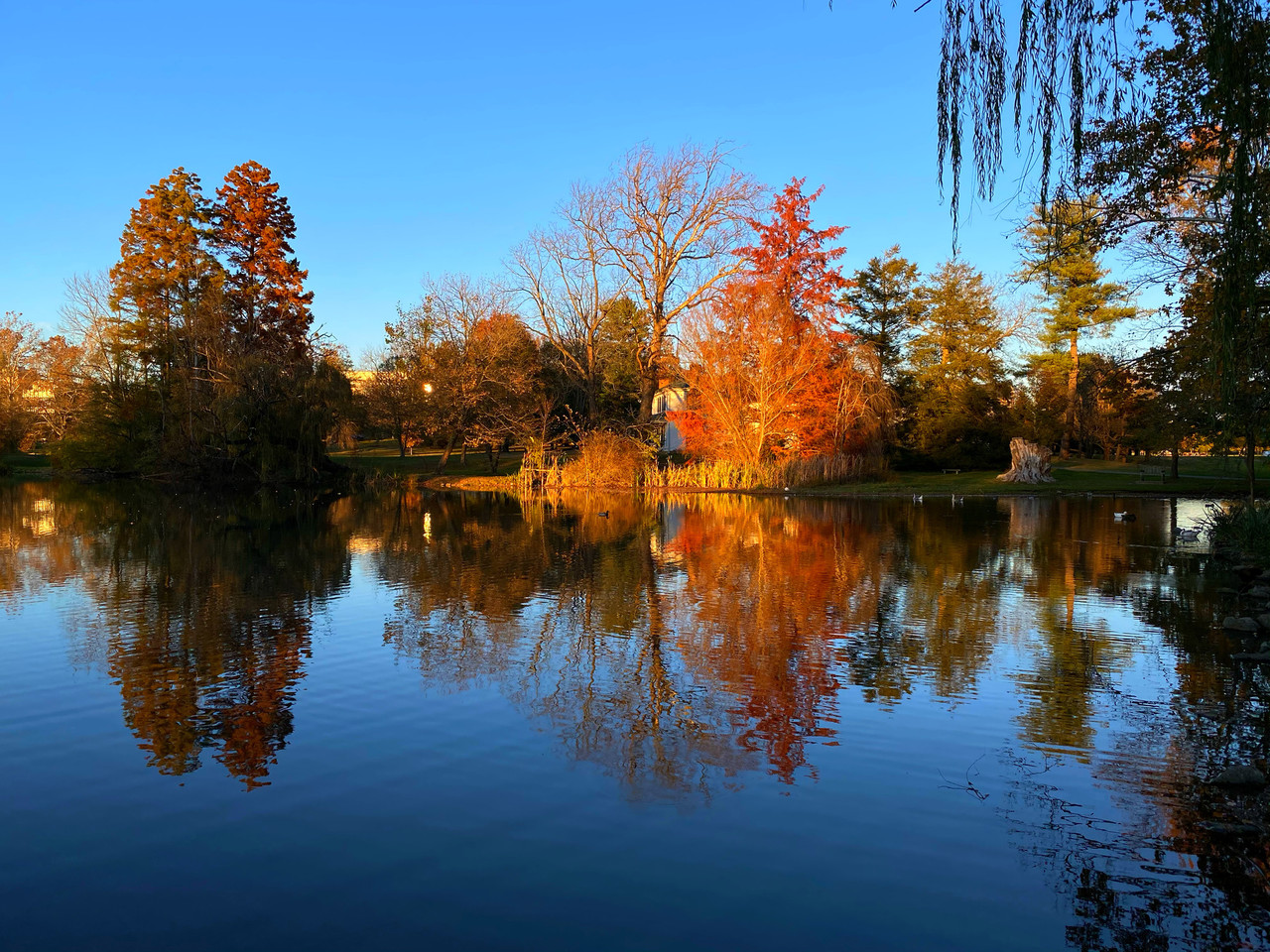Years spent at Virginia Tech’s Blacksburg campus mark a high point fondly remembered by Hokies now spread around the world, and its more than 10,000 trees on campus stand as a vital element in that experience.
From the long-lived old growth behind Lane Stadium to the comforting ring of trees around the Drillfield, the unexpected diversity of the woods around the Duck Pond to hidden favorites in green corridors between buildings, the trees of Virginia Tech hold an important place on campus and within the hearts of Hokies everywhere.
By the Numbers
10,077 campus trees that have been inventoried, not counting trees beyond the core campus, such as in Center Woods, located between Plantation Road and the Huckleberry Trail on the south side of U.S. 460.
225 tree species present on campus.
69% native to Virginia.
85% classified as young or immature.
57% are large stature species.

Trees And Hokies In Close Proximity
The Virginia Tech community shares similar characteristics with large towns and small cities. Many people live and work on and around the campus, which includes both high-use and low-use land areas. There are a lot of trees at Virginia Tech—high-value trees, trees that are important to students, alumni, faculty, and the community—and each one exists under a significant amount of stress because people live and work in play in such close proximity to them.
Tree Management
Tree management is like all other types of management: First, you’ve got to know what you have. Then you need to determine your goals: On campus those goals include healthy trees, a larger canopy, and safe trees.
How does Virginia Tech attain those goals? Initially, the university arborist assesses the campus tree population, getting to know the different areas where there are high densities, or trees of certain age that require more care, or those that may be affected by compaction or future campus development. A plan to maintain the trees is drafted in order to optimize their safety, their benefit, and their health—and to create a lasting legacy for future generations of Hokies.

A big part of the inventory involves comparing species’ relative abundance. For example, Virginia Tech has numerous sugar maples. Sugar maples are susceptible to an invasive pest called Asian longhorn beetle. Developing a plan to mitigate that problem, should it arise, is essential.
Likewise, as the university grows and new buildings are constructed, some trees will be lost. It’s important to plan for their replacement and also provide for the maintenance of the new trees as part of the capital investment of the larger projects. As people walk, picnic, hang out with friends, or study nearby, the soil underneath the trees around the Drillfield or at other gathering places on campus gets compacted, and that can be detrimental to tree health.
Another consideration is age. Trees don’t live forever. As a tree gets older, it starts to consolidate resources and retrench. It’s like a retired couple after the kids move out: are they going to stay in the four-bedroom house? No, they're going to get a condo and not have as much to take care of. Trees do the same thing, and as a result, portions of the tree may begin to deteriorate. When you see dead wood in the top of the tree it could be a result of retrenchment.
Why Trees Matter
Trees have quantifiable values, which include the dollar value of ecological services, real estate values, and canopy benefits, such as aesthetics, shade, storm water mitigation, air quality improvements, animal habitat, and more. The inventoried trees at Virginia Tech have an estimated value of $30.6 million dollars as a capital asset. The number is based on replacement value of the trees, But the dollar figure is only part of the story. When you come to Virginia Tech, you may be able to touch the same tree that your grandfather or grandmother did when they were students, and eventually your grandkids may repeat that action, while thinking of you. So, that tree becomes another connection to the university and to Hokies past, present, and future.
The Merry Oak Near Smithfield Plantation

There are many such legacy trees on campus. One is known as the Merry Oak. The Merry Oak sits in a cornfield owned by Virginia Tech and is intimately connected to the Smithfield Plantation.
The Merry Oak was claimed by a storm on May 19. The site on which it stood will be preserved. King and others are exploring the potential reseeding of the Merry Oak and how best to utilize its wood for memorial and academic activities.
The Arborist
In fall 2019, Virginia Tech hired its first full-time arborist. Jamie King, an alumnus of Virginia Tech with a B.S. in natural resources conservation and minors in urban forestry and forestry previously worked as the city arborist for the City of Roanoke. King is responsible for overall planting, health care, safety, and general maintenance of trees on campus. He manages the campus tree inventory, which identifies and includes photographs of the more than 10,000 trees on campus.
